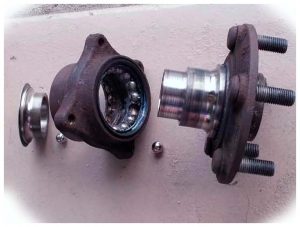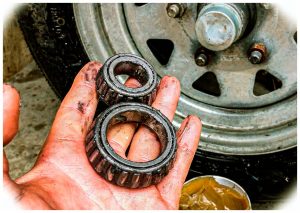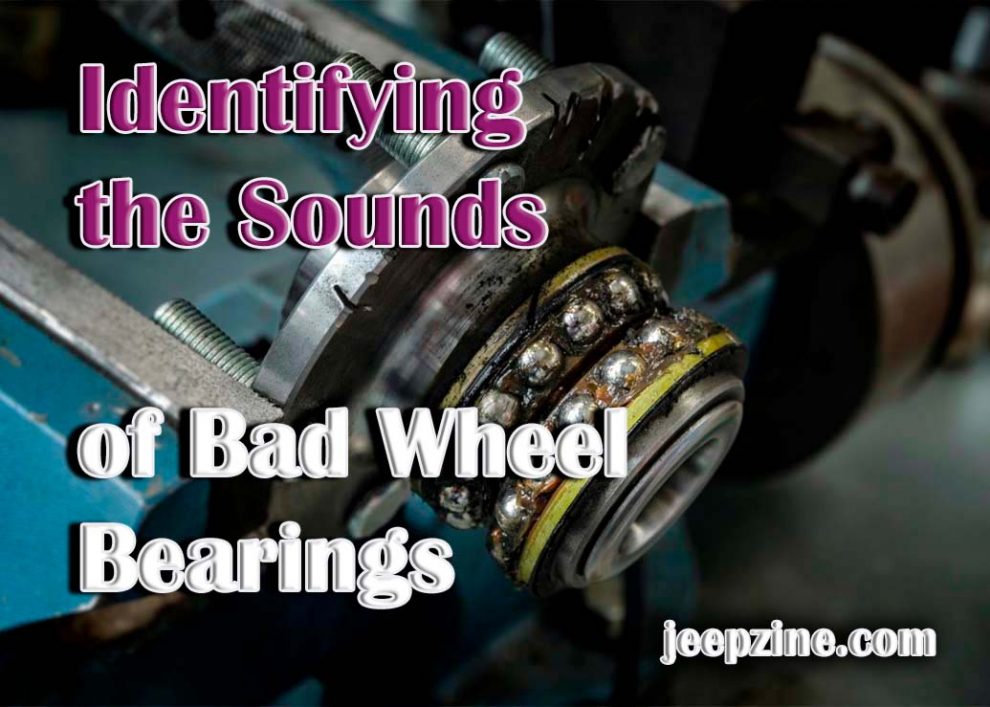A bad wheel bearing can be difficult to diagnose without the right tools, but certain sounds associated with a failing wheel bearing will help you determine if it needs to be inspected. This article will discuss the common sounds of a bad wheel bearing, other signs of a failing wheel bearing, how to diagnose and repair damaged wheel bearings, and more. Also read here about Thrust Bearing Location.
Common Sounds of Bad Wheel Bearings
Bad wheel bearings typically make noise when the vehicle is in motion, including grinding or humming noises, squeaking, squealing, or whining noises, and screeching or howling noises. Let’s take a closer look at each type of sound:

Squeaking, Squealing, or Whining Noises: If your car is making high-pitched squeaking, squealing, or whining noises when in motion, this can indicate a bad wheel bearing as well. These noises are usually due to a lack of lubrication or a buildup of dirt and grime on the roller bearings.
Screeching or Howling Noises: A bad wheel bearing can also make screeching or howling noises when the vehicle is in motion. This is caused by excessive wear on the inner races, which causes them to rub against each other and create friction, leading to loud, harsh noise.
Other Signs of Failing Wheel Bearings
In addition to common sounds associated with bad wheel bearings, there are also some other signs you should look out for when diagnosing a bad wheel bearing, such as vibration in the steering wheel, poor handling, and loose steering response.
Vibration in the Steering Wheel: If your vehicle’s steering wheel begins to vibrate abnormally while driving at any speed, it could indicate that one or more of your wheels has an issue with its bearings. This vibration will usually increase in frequency as you accelerate and will most likely be felt through the entire steering column if left unchecked.
Loose Steering Response: Another symptom of a bad wheel bearing could be a decrease in the vehicle’s steering response. If your car doesn’t respond as quickly when turning corners or making lane changes, it could indicate a bad wheel bearing.
Diagnosing and Repairing Damaged Wheel Bearings
If you suspect that one or more of your wheels has a bad bearing, there are some diagnostic tests you can perform to confirm this before attempting to repair it.

Replacing Damaged Parts: Once you’ve confirmed that one or more bearings need replacing, you’ll need to remove the tires and the bearing assemblies from each wheel. Replace any damaged or worn parts with new ones, following the manufacturer’s instructions for proper installation and lubrication of the new parts. Once you’ve reassembled everything and replaced the tires, take your car for a test drive to ensure that all the noises have gone away and your vehicle is handled correctly.
Conclusion
Bad wheel bearings can be difficult to diagnose, but with a little knowledge and patience, it’s possible to determine if they are bad. If you’re hearing grinding or humming noises when accelerating or squeaking, squealing or whining noises when in motion, then it’s likely time to replace one or more bearings. For further diagnostics, be sure to check your steering wheel for vibration and any signs of loose steering response; if either of these is present, it could mean a bad bearing. Finally, always use genuine OEM parts when replacing your bearings, and remember that proper installation and lubrication are key for ensuring long-term reliability.


Add Comment